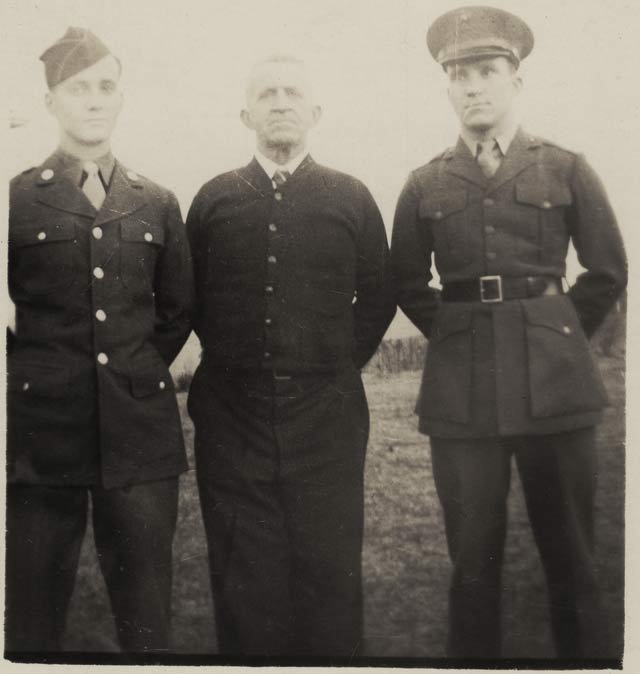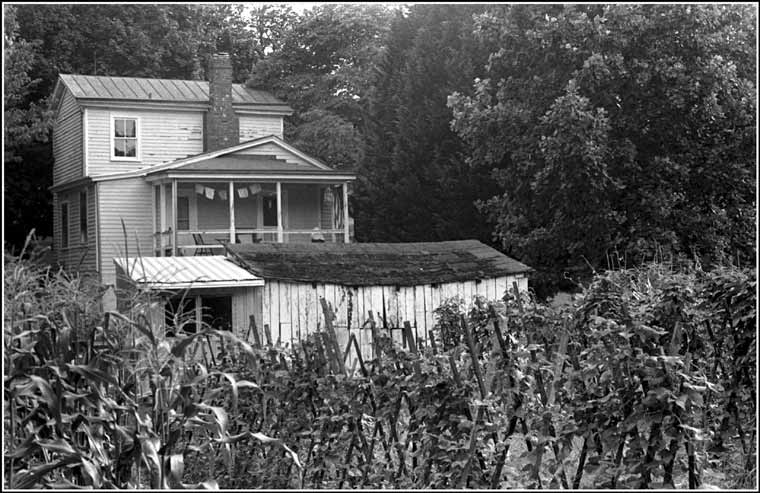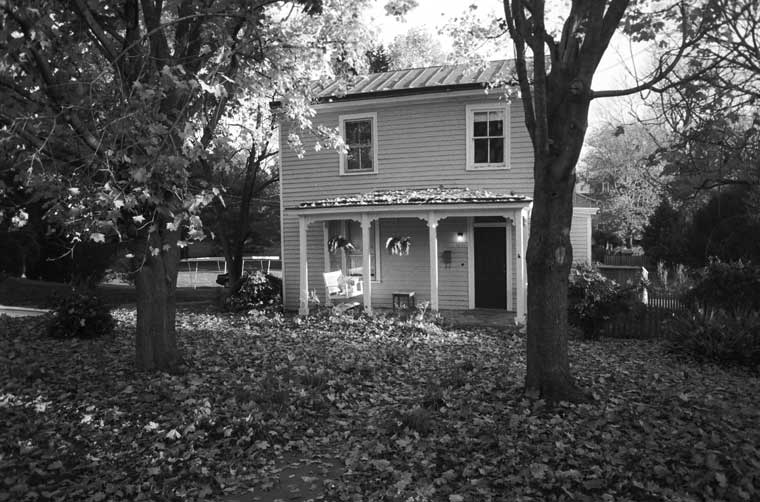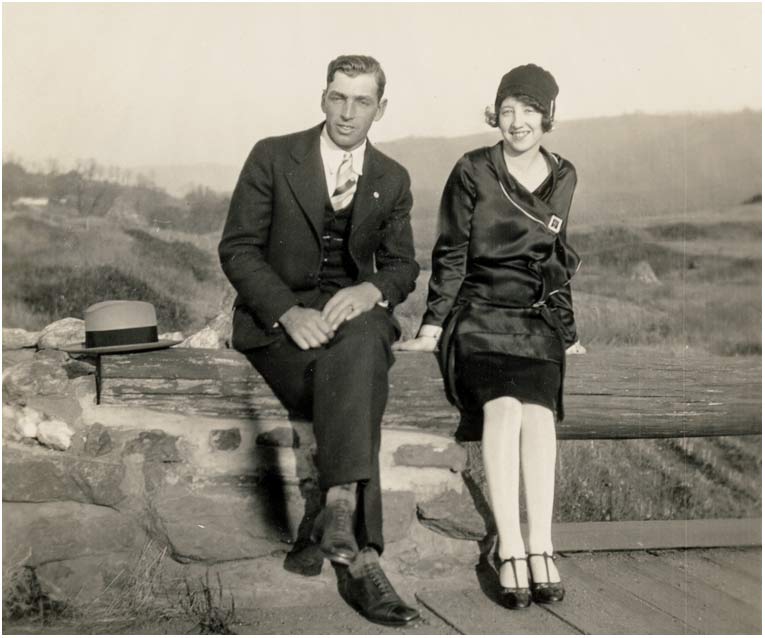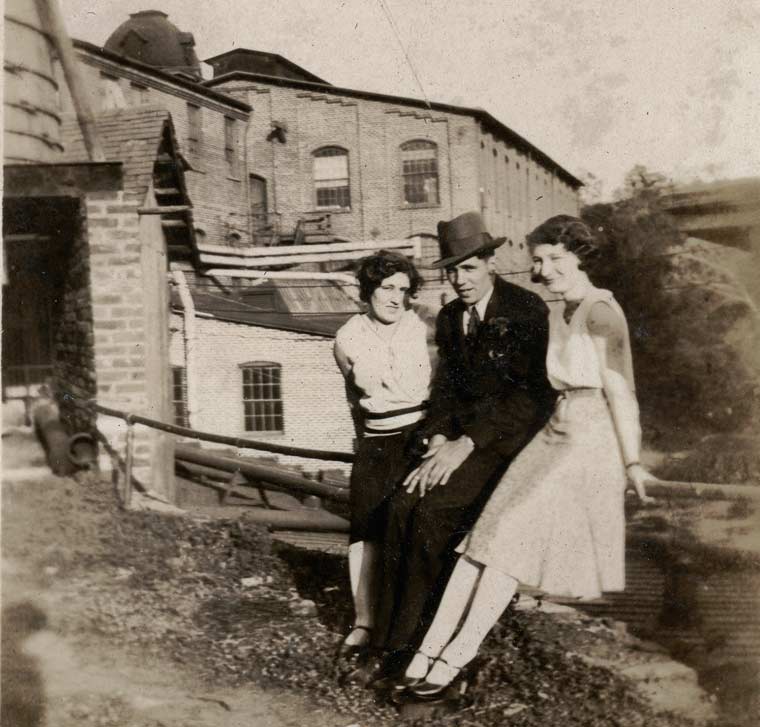
right, Louise Hollaway (Baltimore), center W.F. Pritchett, background, the Woolen Mill and Monticello mountain
During the period from 1846 to 1850 when the Parishes, Jones, and Randolph owned the business operating at "Pireus," the company became known locally as the Charlottesville Factory. Apparently there was no important reason for the change; local customers probably resisted the more cumbersome title using the proprietors' names. Yet it is certain that during those few years, the factory, especially that portion devoted to the making of cotton and woolen cloth, reach a level of maturity for its day and section. By 1850, when Henry Jones bought out the other interests, the company was making a large variety of goods. Coarse or medium quality jeans and linseys for servants and slaves were made from wool. Cotton yarns, baggings, and pantaloon drillings added to the offerings of the mill, and both raw cotton and wool were carded for those who desired to spin and weave their own material. The buyer was required to pay a part of his bill in the form of raw wool and he could get cloth made to his own order from cotton or wool he brought to the plant. The mill thus extended a type of custom service wedded to a barter system which guaranteed to the customer the quality of raw materials used in making whatever he desired. However, this was not unique but rather conformity to the pattern of growth of early mills.--Harry Poindexter
Labels: architecture, Holloway, Poindexter History, Pritchett
